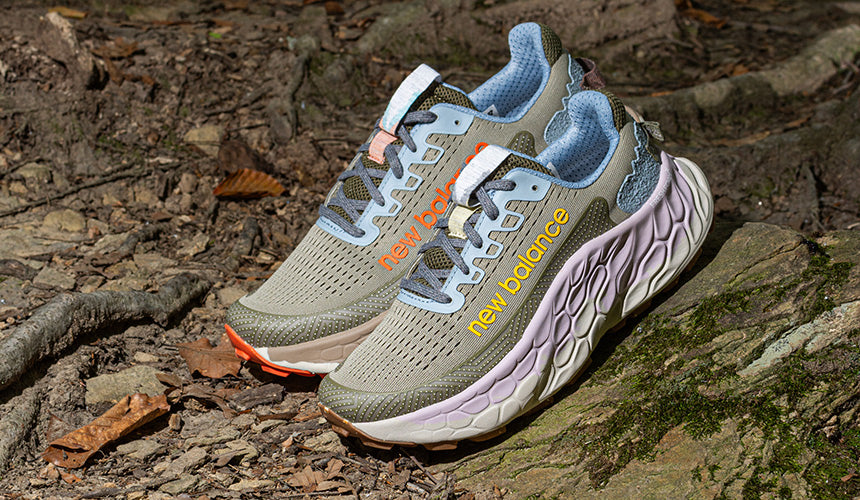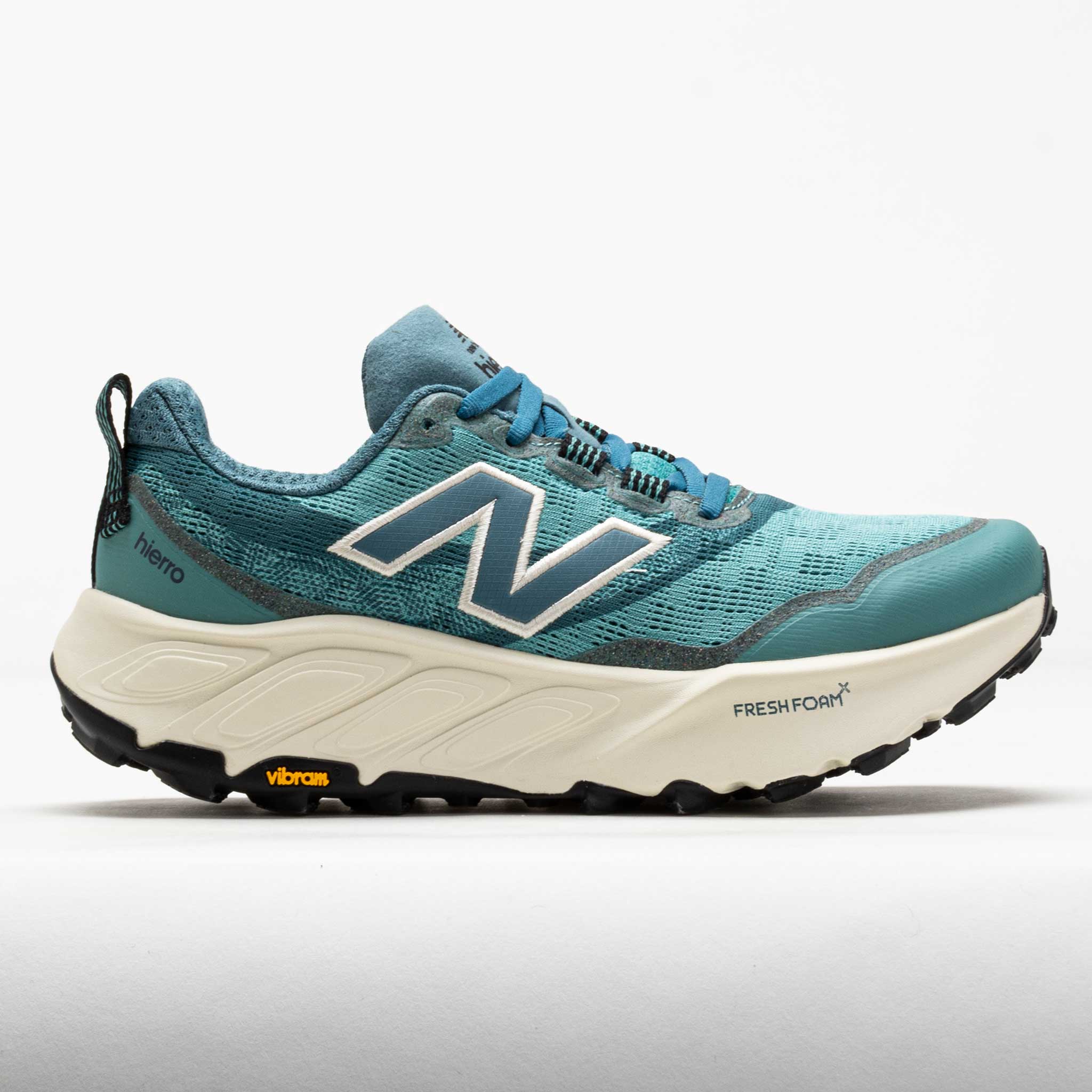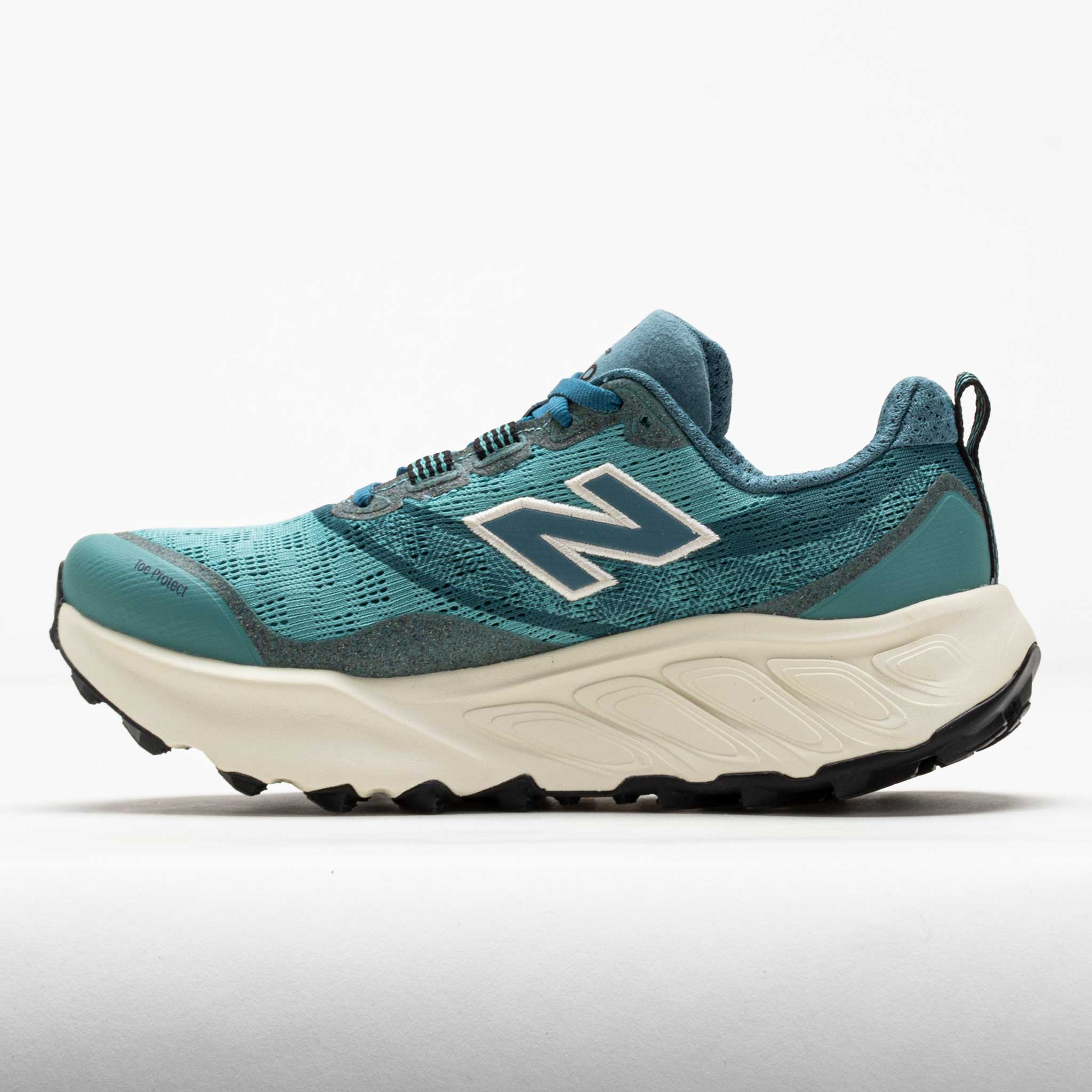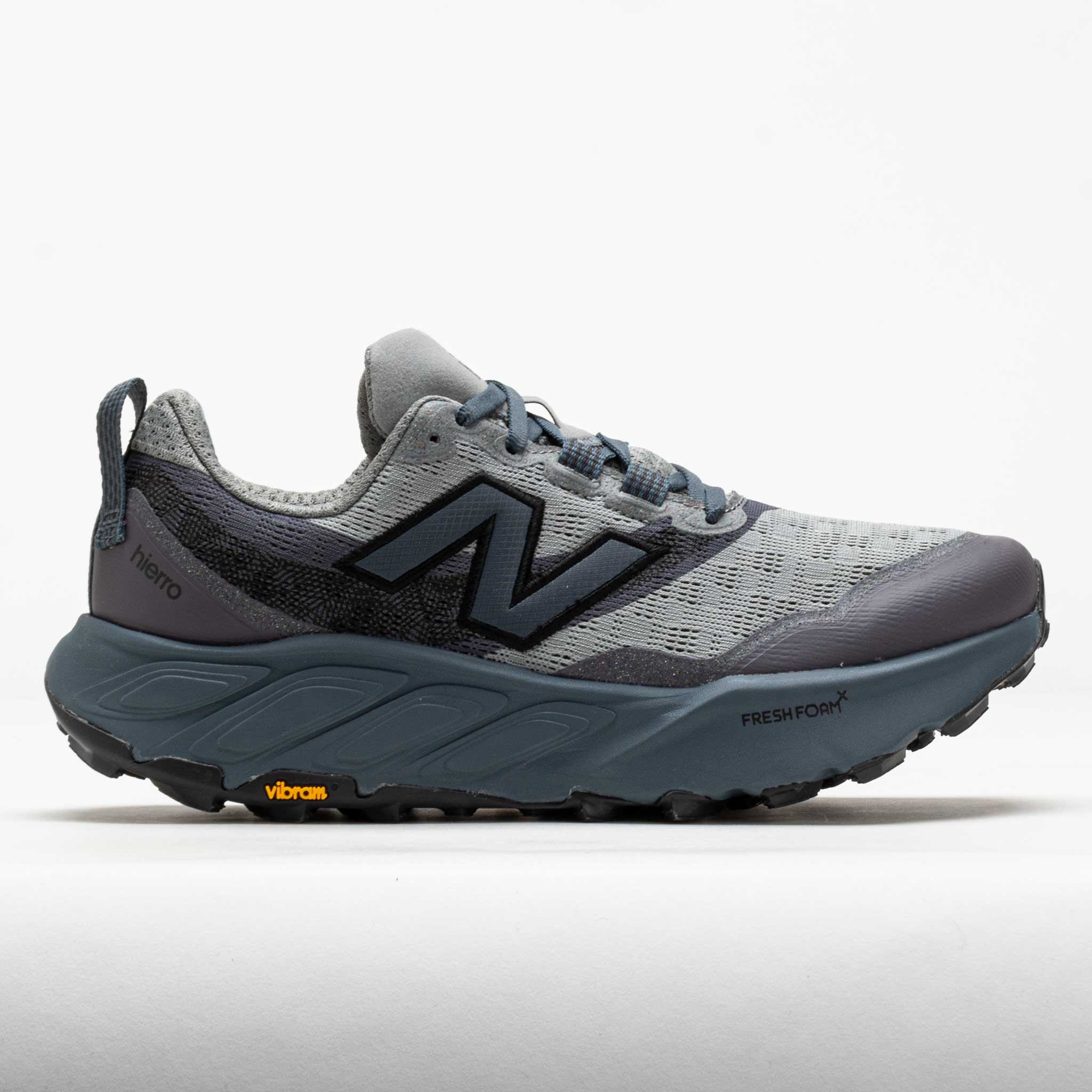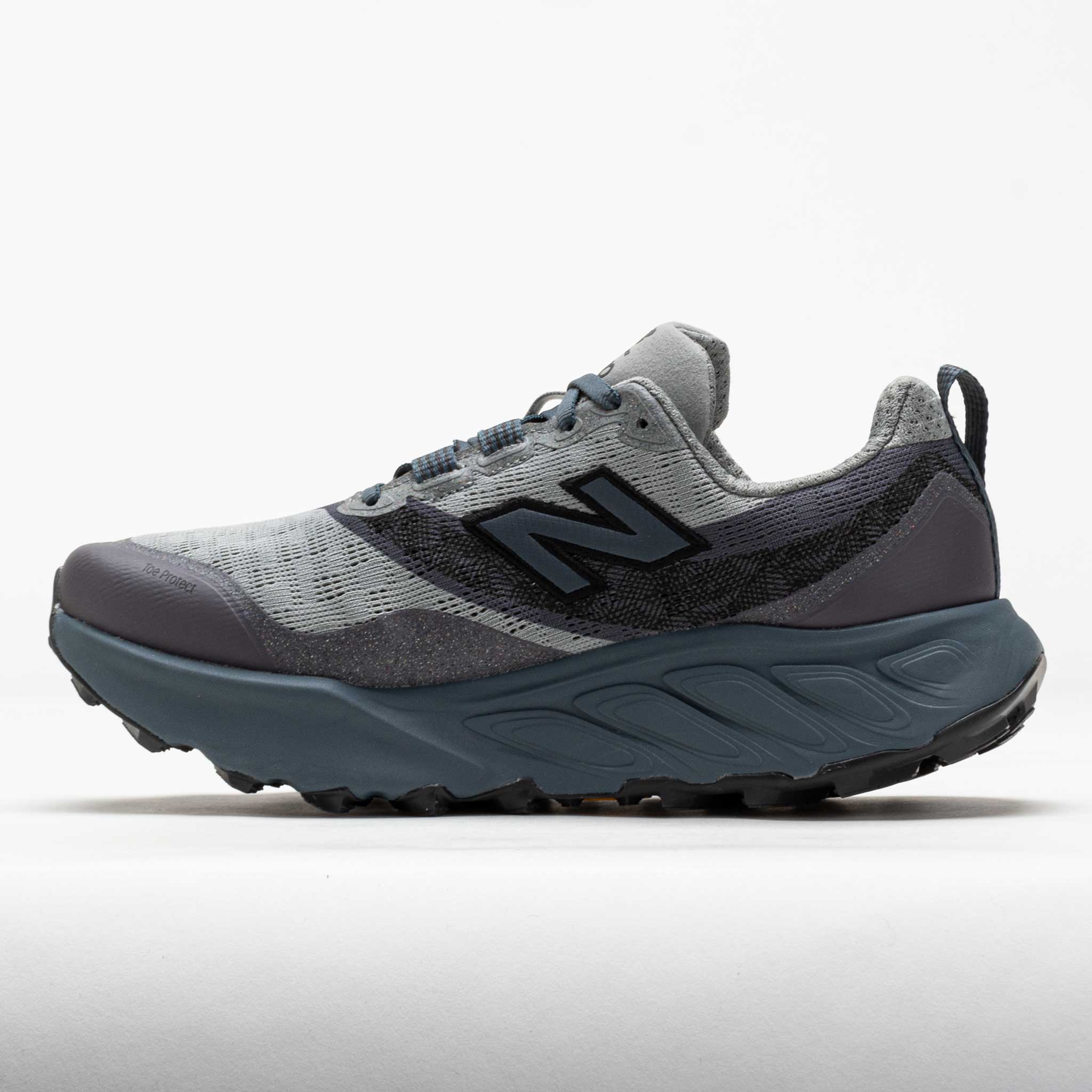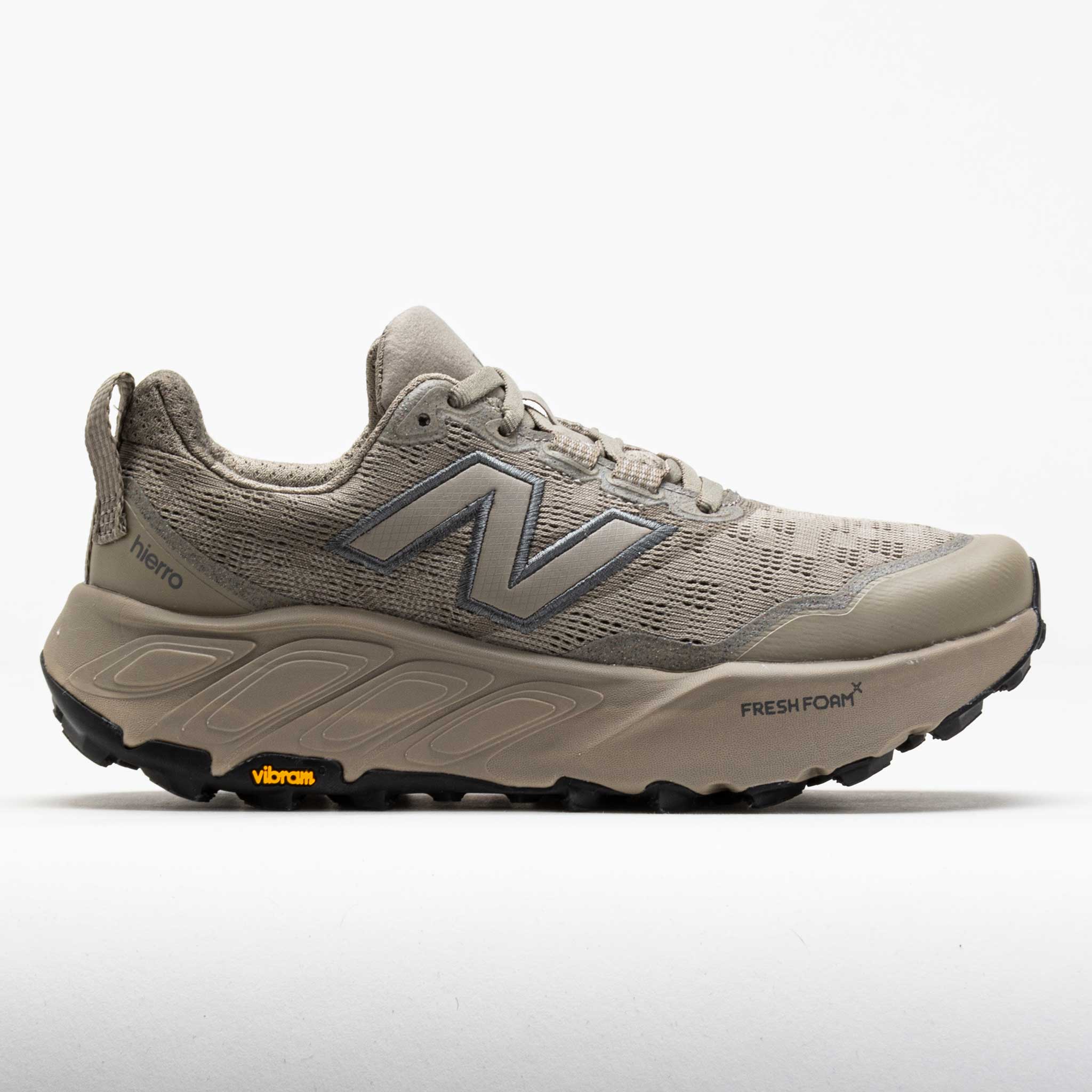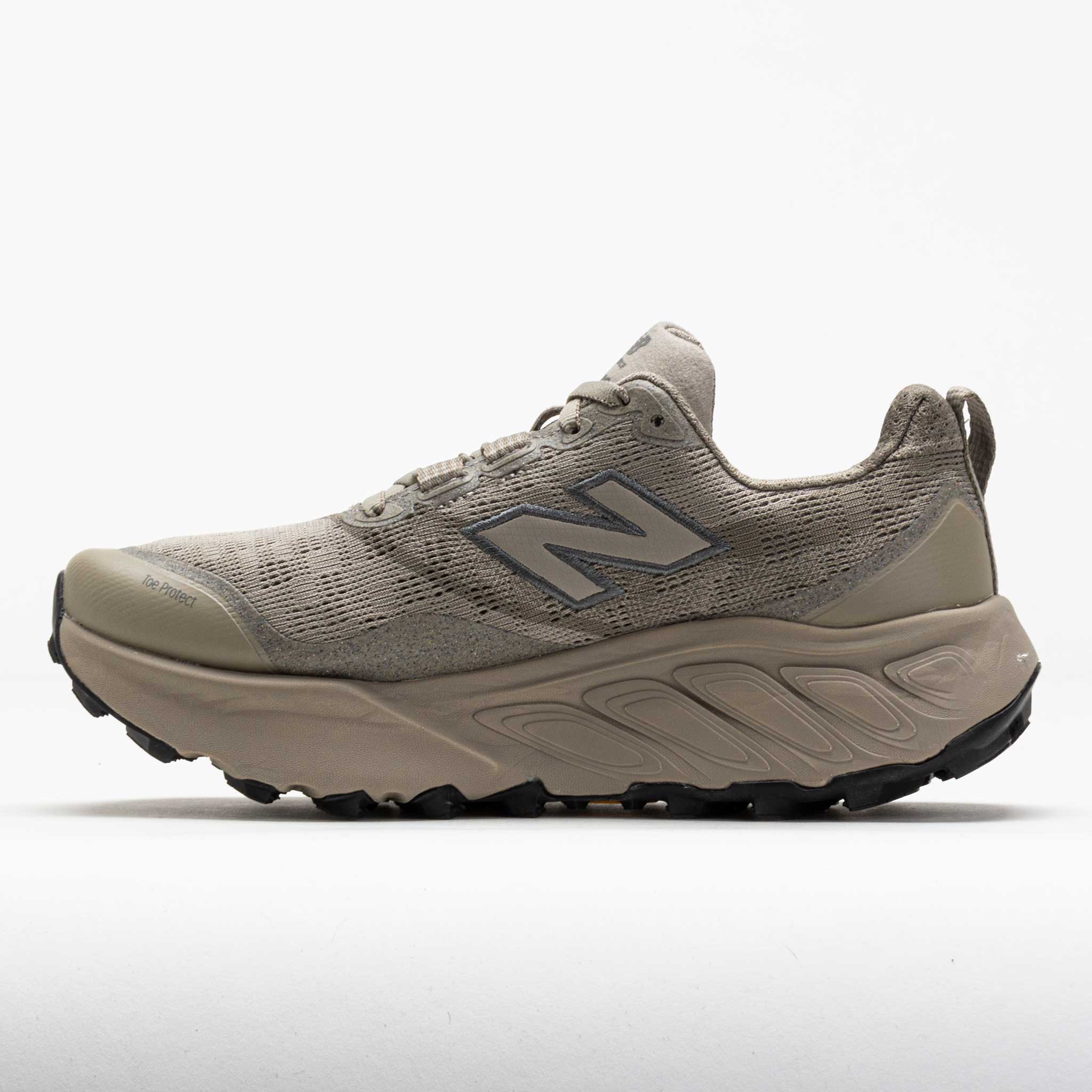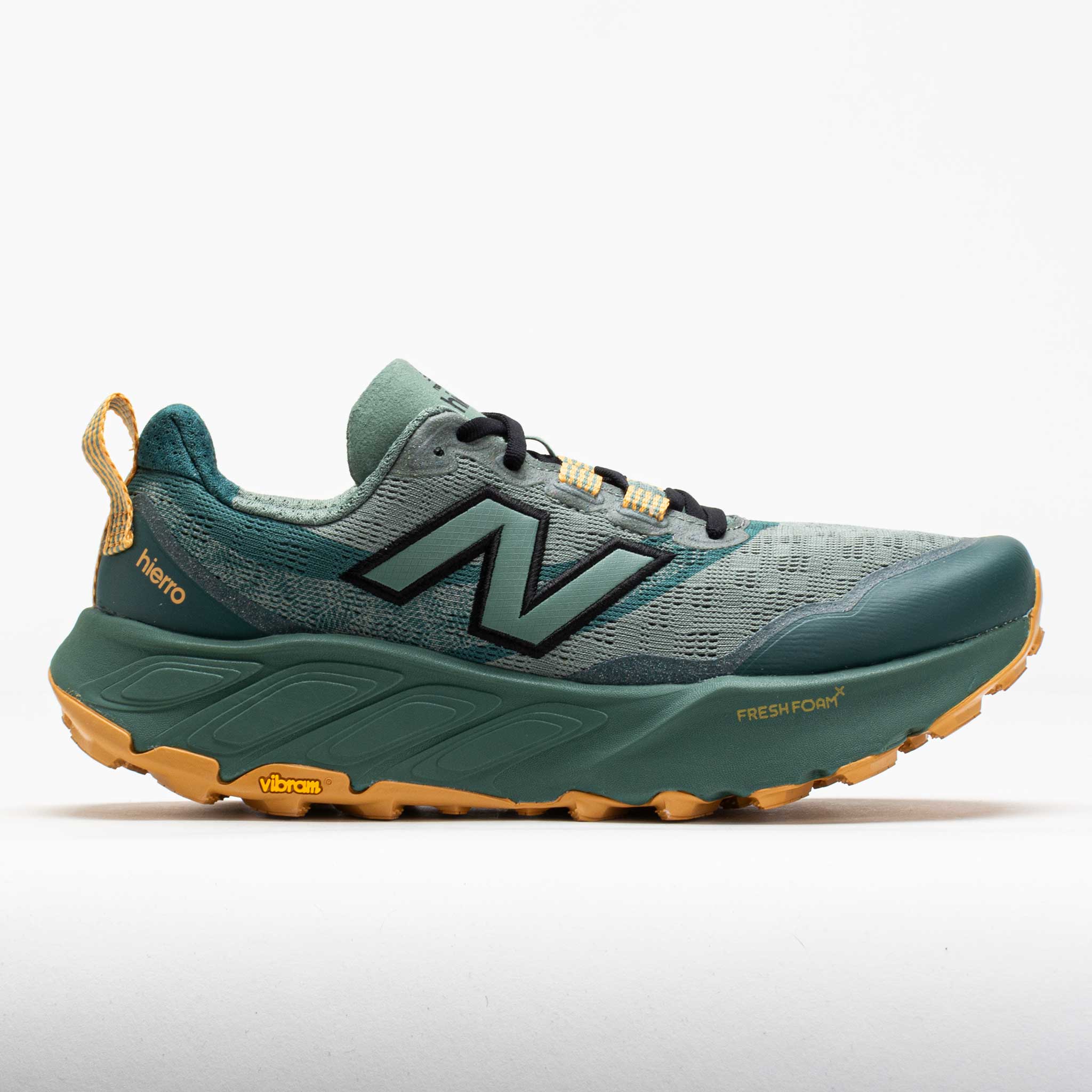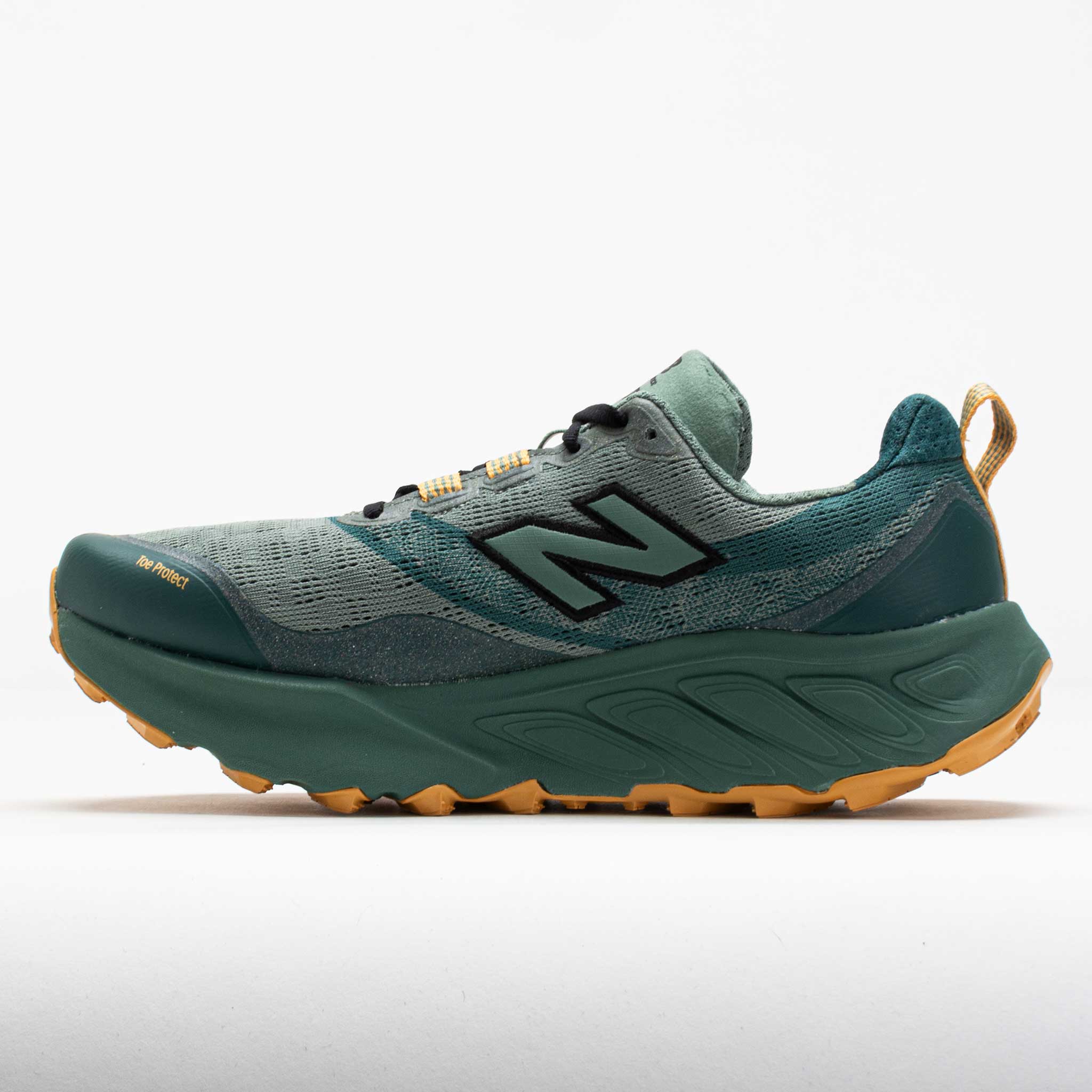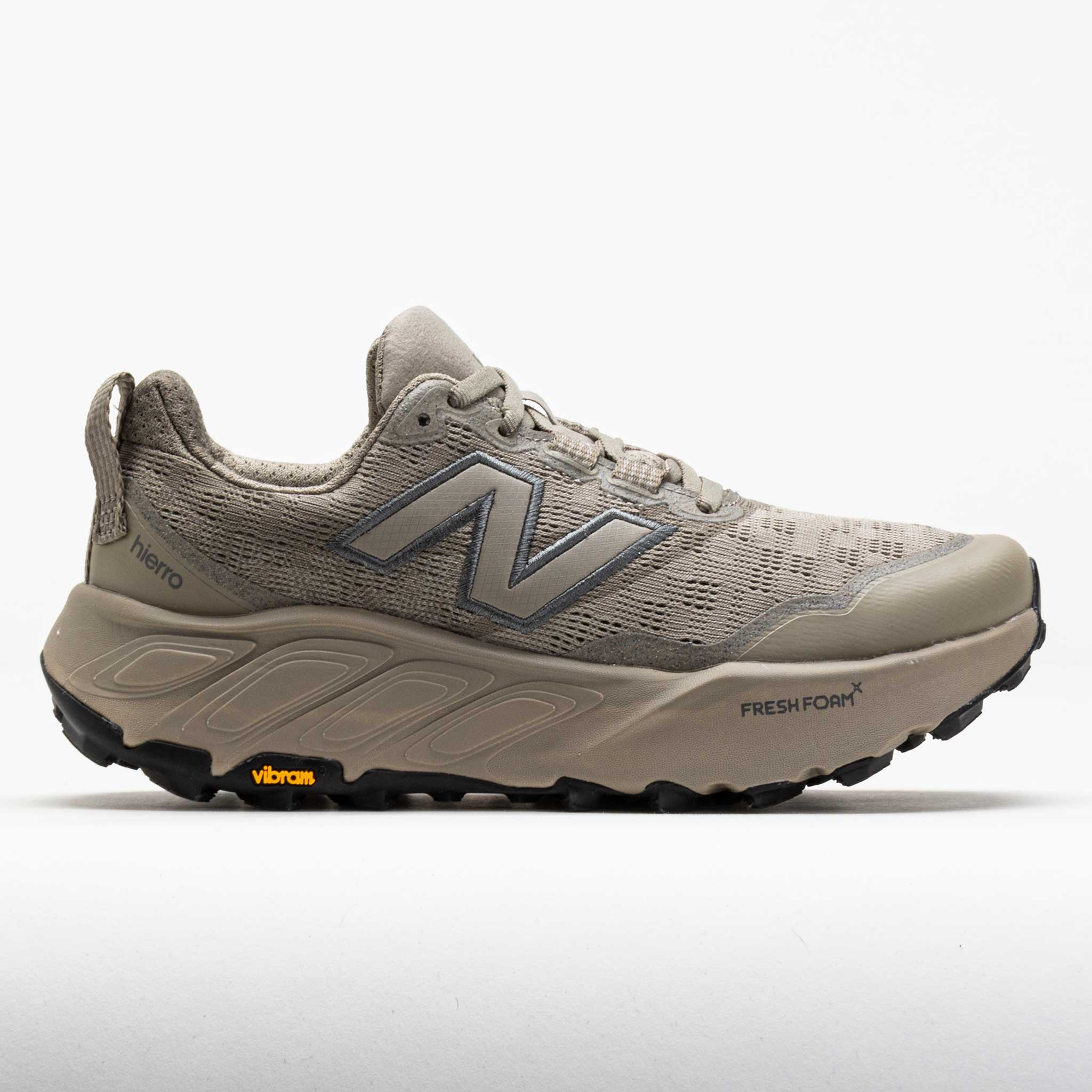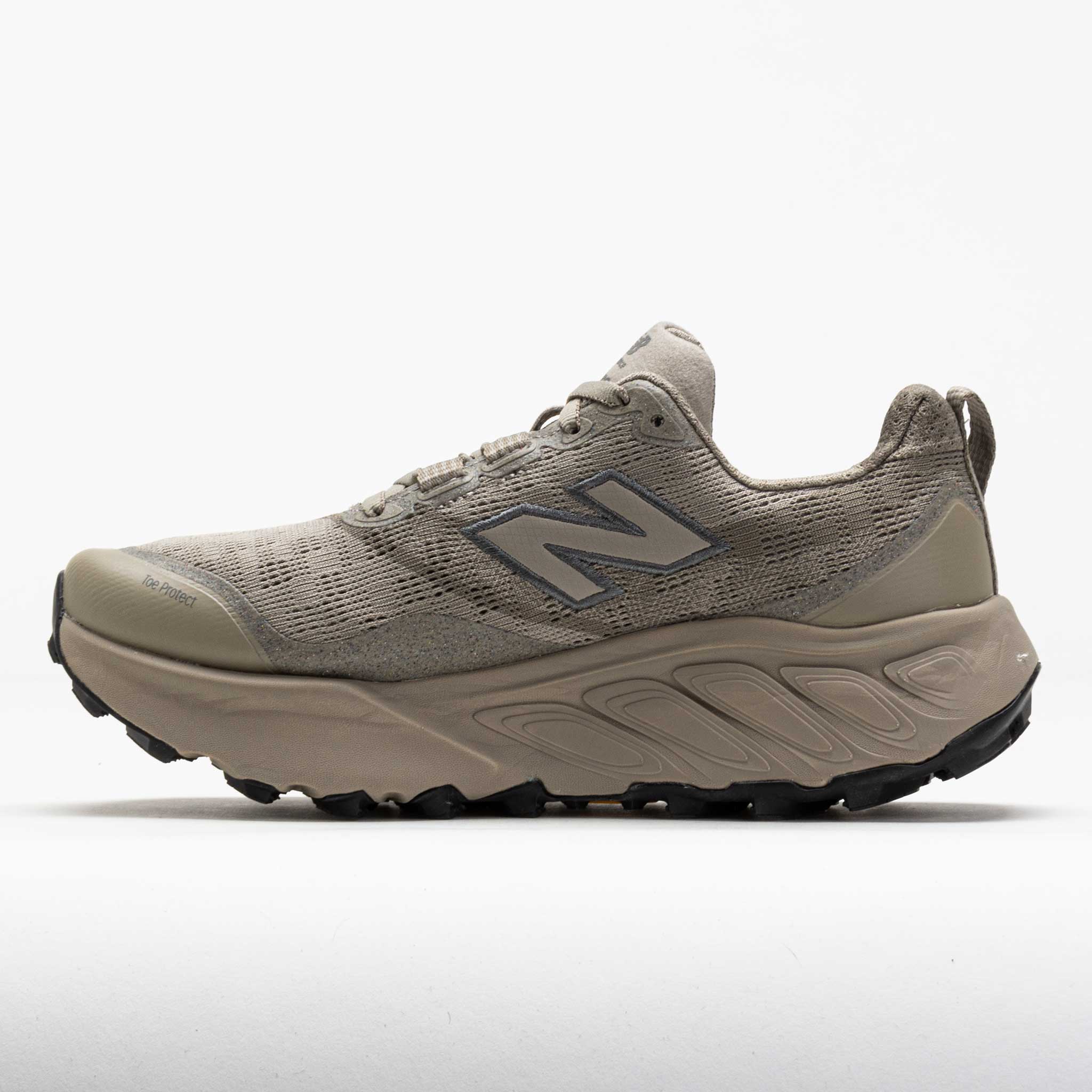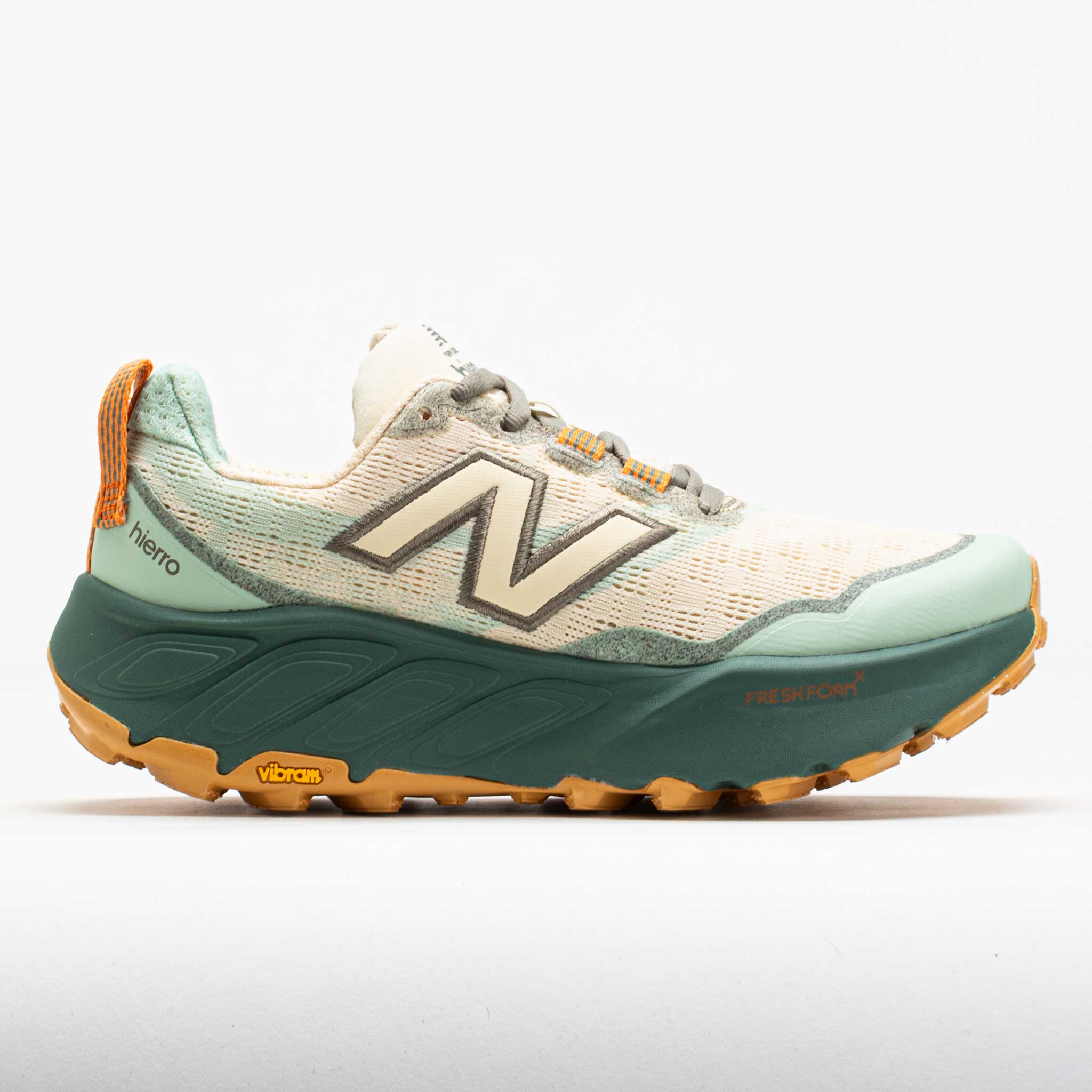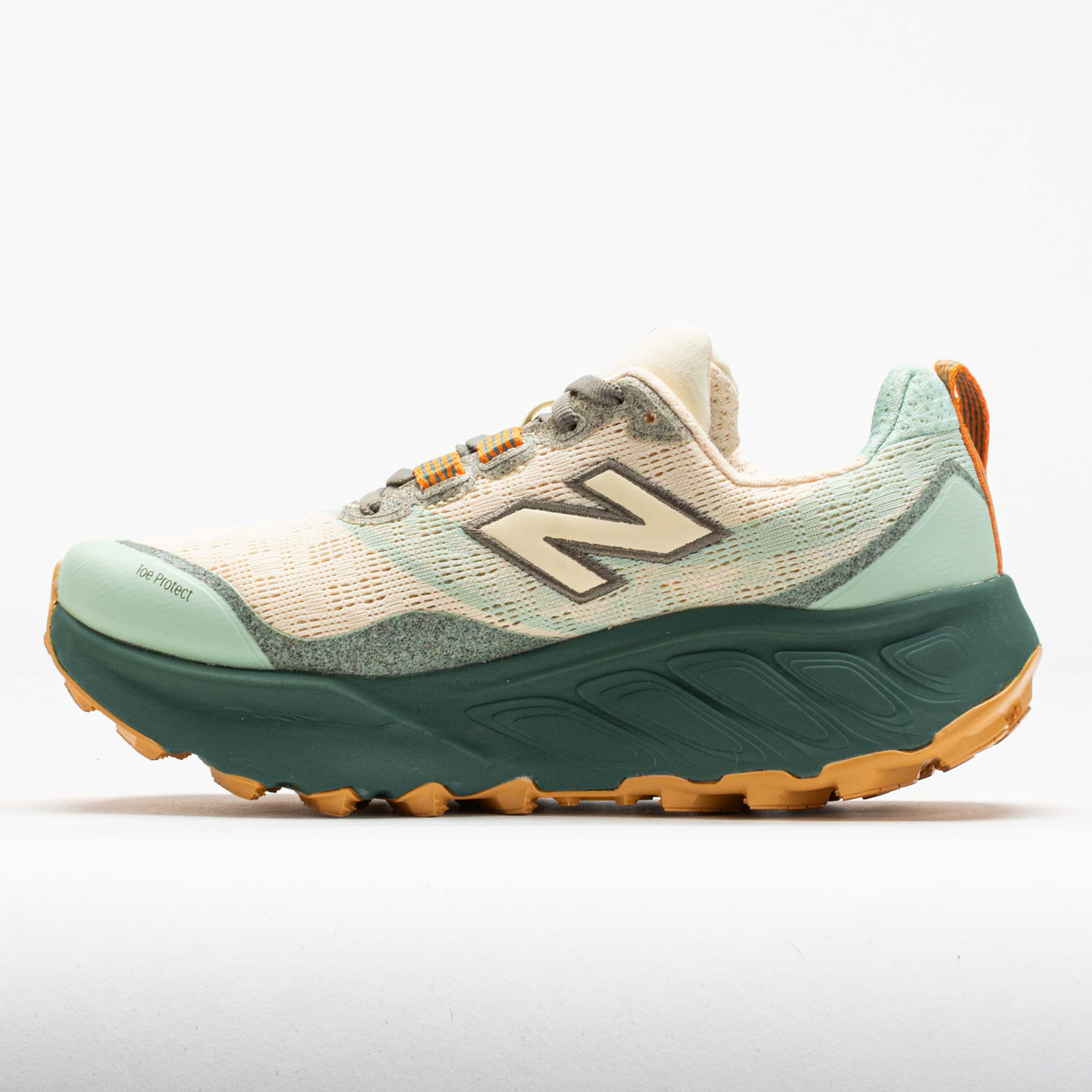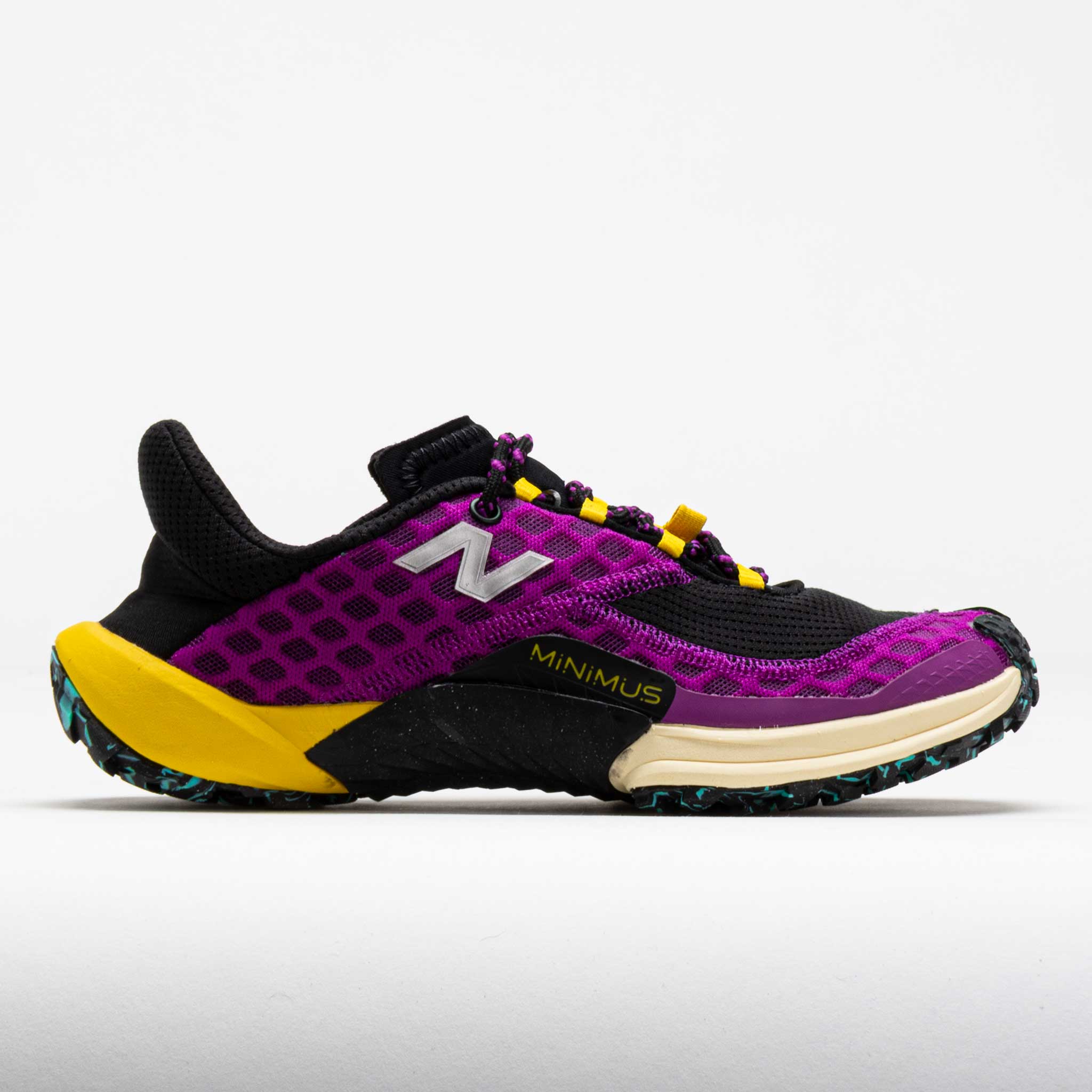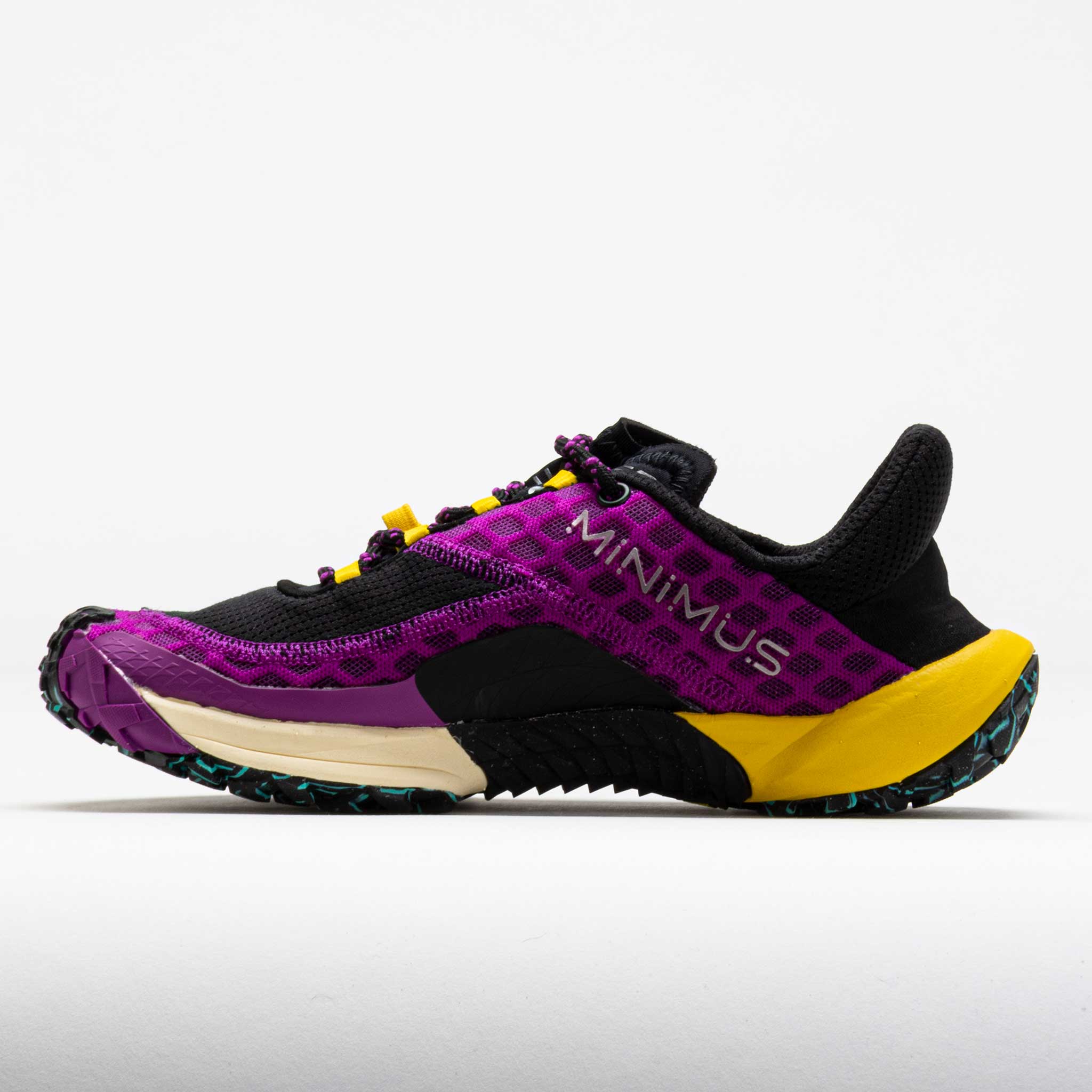When buying a trail running shoe, three things come into focus; the type of terrain, the distance you’ll cover, and the kind of runner you are – beginner or advanced.
In this article, we’re going to break down how New Balance’s technology improves your running, and we’ll help you choose the best shoes.
How New Balance trail running technology improves your performance
Fresh Foam More Trail – New Balance’s maximum cushioned shoe
The Fresh Foam More Trail is designed to be a heavily cushioned shoe and is great for long-distance running.
Fresh Foam models are known for their cushioning, but New Balance went over and above with this shoe. The enormous heel is thick and soft to cushion your feet against impact, especially when running downhill or on rocky terrain.
The upper is plush and flexible, making the shoe adapt to your feet. And, with a structured and padded heel collar, your feet will stay put and not move side to side.
The fit of the shoe is designed to accommodate various foot shapes. However, if you are looking for a precision fit or race-ready shoe, this shoe is not for you.
The balance in this shoe is a bit off. It has a lot of volume underneath, and you may lose footing on uneven terrains.
The shoe is built for people who want maximum cushioning. So, if you are looking for a shoe with a minimalist feel, the Minimus Trail 10 might be ideal.
What you’ll notice:
- Great underfoot protection
Fresh Foam More Trail has an enormous soft heel, which will protect your feet from impact when running on technical or rocky terrain.
- A roomy toe box
The toe box is wide enough for your toes to spread out. It also accommodates various foot shapes.
But take note, people with narrow feet may struggle a bit to maintain a secure fit, especially on uneven terrains.
Fresh Foam Hierro v5 – New Balance’s most popular shoe
The Fresh Foam Hierro is a fan favorite and the best selling model.
The shoe provides a little bit of everything. It has decent traction, durability, and support. Though the lugs are not overly aggressive, they provide grip on various terrains. It is, however, highly cushioned and comfortable.
On the downside, the shoe is rigid, does not flex easily, and it lacks responsiveness. Plus, the heel is dense, which affects the overall weight of the shoe. This means the shoe is probably suited for slow running and recovery days. So, if you want a shoe for ultra-distance races, the Minimus Trail 10 might be more suited.
The Hierro is a multi-terrain shoe, and it wasn’t designed to shine on any specific terrain. If you are running on muddy or super technical trails, you might need a specialized shoe.
What you’ll notice:
- Incredibly comfortable
The heel is cushioned, not like the Fresh Foam More Trail, but enough to cushion your feet and absorb impact.
- Highly protective
The layered upper does a great job of keeping your feet protected from debris, snow, and water.
Take note, because it's thick, the upper affects the shoe’s weight, making it a bit heavy.
Minimus Trail 10 – New Balance’s minimalist shoe
This shoe’s strength is in the name – it is a minimalist shoe.
New Balance reduced much of the cushioning, creating a low-profile shoe with a ground feel.
The Minimus Trail is lighter than any other model in the roster. With a lightly cushioned heel, it is the closest thing to barefoot running.
The upper is soft and plush, which gives a glove-like feel. And, since it is lined with a soft fabric, you can wear these shoes without socks.
As you wear the shoes, you’ll notice a band on the upper. This is designed to stop your feet from pressing at the toe cap when running downhill.
One thing to note, the heel collar is lightly padded and may press on your Achilles. Also, the shoes may take a while to break in.
These shoes are for runners who like ground contact and barefoot running. So, if you are looking for underfoot support, the Fresh Foam More Trail might be a perfect choice.
What you’ll notice:
- Lightweight and flexible
These shoes are feather-light. When you wear them without socks, it feels like you are running with nothing on your feet.
They are also very flexible, so much so that you can fold them up and put them in your side bag pockets.
- Great drainage
The upper materials drain super fast, making it easy to run on wet trails.
Summit K.O.M – New Balance’s everyday trail shoe
Summit K.O.M, also known as the King of the Mountain (there’s also a women's version Q.O.M), is an all-purpose trail shoe.
Just like the Hierro, these shoes have a bit of everything – solid traction, good cushioning, decent durability. However, one key difference is the weight. They are lighter and can withstand medium to long-distance trail running.
Also, the shoe has a rock plate that minimizes pressure and reduces shocks.
The Summit K.O.M comes in different widths to accommodate both narrow and wide footed runners.
This shoe is great for beginners and casual runners looking for a bit of support during their everyday trail running.
The shoes offer different features but do not shine in any particular one. So, if you are looking for a specialized shoe designed to take on technical terrains, this shoe may not be ideal for you.
What you’ll notice:
- Responsive midsole
The midsole is stiff but is also springy enough to make the shoes a bit responsive.
When you wear the shoes for the first time, they might feel rigid, but they will loosen up once you run for a few miles.
- Grippy
The spaced-out lugs translate to good traction. These shoes will hold up well no matter how tricky the trail gets.
The outsole technology makes the shoe stable on uneven surfaces.
What to look for in a trail running shoe?
Although a trail shoe can hold up on the road, you cannot use a road shoe on trails.
For trail running shoe, you need to look at:
- Grip. Deeper and spaced out lugs on the outsole offer better traction
- The heel-to-toe drop. This is the height difference between the heel and the forefoot. Shoes with a higher drop are for casual and more laid back runners, while zero-drop shoes are intended for faster aggressive runners
- Shoe cushioning. It ranges from barefoot (no padding) to maximum cushioned. Shoes with no cushioning appeal to runners who want a ground feel. Maximum cushioned shoes, on the other hand, are for runners who want underfoot protection. They are specifically good for long-distance running
- Shoe type. Are you looking for a light, rugged, or off-trail? The shoe type offers specific features for the trail it's designed for
Note: New Balance trail shoes are known for cushioning, apart from their minimalist model. They do not have a rugged shoe for technical terrains yet, but their all-purpose shoes are designed to take on various trails.
How do I choose the best New Balance trail running shoe for me?
To choose a suitable running shoe, you’ll need to answer these two questions:
- What type of run?
- What distance will you cover?
First, what type of run will you be engaging in?
- Casual runs
The purpose of casual running is to get blood circulating and to relieve soreness from your muscles. And, they are ideal following a tough workout or a run. Your pace is not important for casual running; the goal is to recover and rebuild. So, you'll probably need a running shoe that can handle anything.
The Fresh Foam Hierro would be a great choice. It is cushioned and easier on your joints. Plus, it will reduce fatigue. Though the shoes are a bit heavy, they are perfect for casual runs (since you are not looking for pace).
- Tempo runs
They are faster than casual runs and are great for conditioning your muscles and cardiovascular system. A tempo run is more aggressive, and you’ll need a shoe that offers protection and stability so you won’t roll your ankle.
The Fresh Foam More Trail is great for longer runs but less rugged terrains. It is not as aggressive but will hold its form when running on rocky terrains.
- Interval runs
They are structured and ideal, and they are perfect if you're training to run a 5k race. The runs offer a mix of light intensity speeds with jogging breaks.
Therefore, you’ll need a shoe that is light, moderately cushioned but can handle bursts of speed.
The Summit K.O.M would be a great option. It's responsive, light, and cushioned without being too soft.
Second, what distance will you cover?
- Short distance – 5k
For racing, you’ll need a trail shoe that offers speed like the Minimus Trail 10. This shoe has a little cushioning, which makes it light and speedy. Plus, it's very flexible.
Please note: because it has no underfoot cushion, the shoe is great for flat surfaces and well-paved terrains.
If you want to tackle longer races, you might want a shoe with cushioning for maximum comfort. The Fresh Foam Hierro fits perfectly.
- Long-distance (ultra-marathon)
For ultra-marathon, a heavily cushioned shoe that is a bit lighter would be a great option. The Fresh Foam More Trail would be a great option for long-distance runs.
It has a stacked heel with amazing comfort and will hold your foot in place. Plus, it is breathable and will keep you fresh, which is great if running a long-distance race.
The downside with this shoe is that it is on the pricey side because of the premium features.
Frequently Asked Questions
Can I use New Balance running shoes for road running?
Trail running shoes are designed to offer more traction and stability, which are the features you need for running on rugged terrains.
Although they are not designed for off-road running, the trail shoe is safe and will hold up well when running on road surfaces.
How often should I replace my New Balance trail running shoes?
It is important to replace your trail running shoes to prevent injuries. Some factors to look for include:
- Mileage. Buy new trail shoes every 300 to 500 miles. Or replace them every 18 months from the date of purchase (whichever comes first).
Keep in mind; your running style will impact how long the shoes last. So, yours may wear out sooner if you are aggressive and hard on your shoes
- Loss of cushioning
- Worn down treads
- Achy joints and discomfort after running
How do I make my trail runners last longer?
Your trail running shoe technology and materials will wear out eventually, but here are a few tips to make them last longer:
- Rotate your shoes. Buy a few trail running shoes (probably one for technical terrains and one for everyday running)
- Dry them out. Remove the insoles and let the shoes sit for a few hours in the open air. But, avoid drying them under direct sunlight
- Clean them out, but not using a machine
- Use the shoes for their intended function
- Keep an eye on the miles
I need help deciding: Which would be the best trail shoe for a beginner?
If you are new to trail running, you’ll need a do-it-all-shoe like the Summit K.OM or Q.O.M. The shoe can handle just about anything. It is lightly cushioned and has good traction.
Since it is an everyday trail shoe, it doesn’t have the expensive tech you’d find in specialized shoes. That also means the price tag is lower. As you learn what trail shoe you like, you can invest in a more specialized and premium model.
Back To Top
